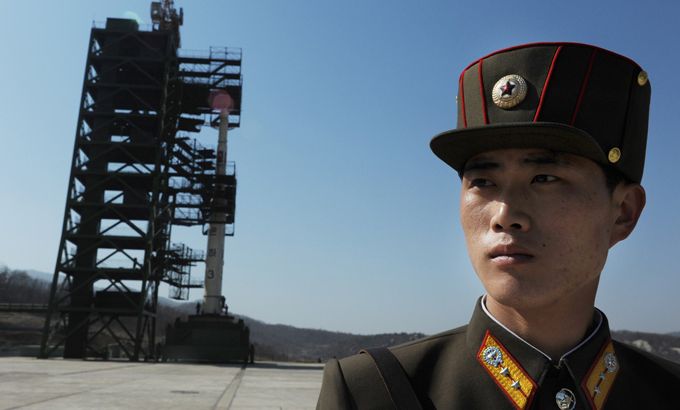North Korea launches long-range rocket
Pyongyang says it has succeeded in its mission of placing a weather satellite in orbit.

North Korea has launched a long-range rocket in defiance of critics who believe it is seeking to develop technology that will enable it to deliver a nuclear warhead.
The official Korean Central News Agency said Pyongyang had succeeded in its mission of placing a satellite in orbit.
Keep reading
list of 4 itemsTurtles swimming to extinction in Malaysia as male hatchlings feel heat
Could shipping containers be the answer to Ghana’s housing crisis?
Thousands protest against over-tourism in Spain’s Canary Islands
“The launch of the second version of our Kwangmyongsong-3 satellite from the Sohae Space Centre… on December 12 was successful,” KCNA said. “The satellite has entered the orbit as planned.”
South Korea’s Yonhap news agency also said the launch appeared to have been a success, with all three stages performing as planned.
“The rocket stages fell on areas in line with its earlier announcement and the launch appears to be successful,” the agency quoted military officials as saying.
North American Aerospace Command (NORAD) officials in the US also confirmed the launch and that “an object” had achieved orbit following it.
The rocket was launched just before 10am Korea time (01:00 GMT), according to defence officials in South Korea and
Japan.
The UN Security Council will meet on Wednesday to discuss the launch in defiance of threats of sanctions, a Western diplomat said.
“The Japanese and the Americans have requested a Security Council meeting, which will take place late on Wednesday morning” around 11:00am (17:00 GMT), the diplomat said.
Technical problems
| NORTH KOREA’S KEY MISSILE AND ATOMIC TESTS: |
|
|
Al Jazeera’s Harry Fawcett, reporting from Seoul, said the successful launch was “a significant technological breakthrough” for North Korea.
The latest launch comes after a failed attempt in April when the rocket fell apart just minutes after blast-off.
North Korea says the launch is aimed merely at putting a weather satellite in orbit. It is banned from conducting missile and nuclear-related tests under UN sanctions imposed after its 2006 and 2009 nuclear tests.
Under new leader Kim Jong-un, the country’s government has pledged to bolster its nuclear arsenal unless Washington scraps what Pyongyang calls a hostile policy.
Richard Broinowski, a former Australian ambassador to South Korea, told Al Jazeera that it was important not to rush to conclusions regarding the intent of the launch.
“This could be called a missile test or it could be called the launch of a satellite. It’s the same vehicle in both cases. And that’s why I think there’s a certain double standard here: when North Korea does this, it’s obviously according to the United States, a missile test, but when South Korea or Japan launches their own missiles to put satellites in orbit, it is regarded as a peaceful demonstration of their technology,” he said.
Tensions are high between the rival Koreas. The Korean Peninsula remains technically at war, as the 1950-53 conflict ended in a truce, and Washington stations nearly 30,000 troops in South Korea as a buttress against any North Korean aggression. Tens of thousands more are in nearby Japan.
 August 31, 1998: Intermediate-range missile fails to put satellite into orbit
August 31, 1998: Intermediate-range missile fails to put satellite into orbit